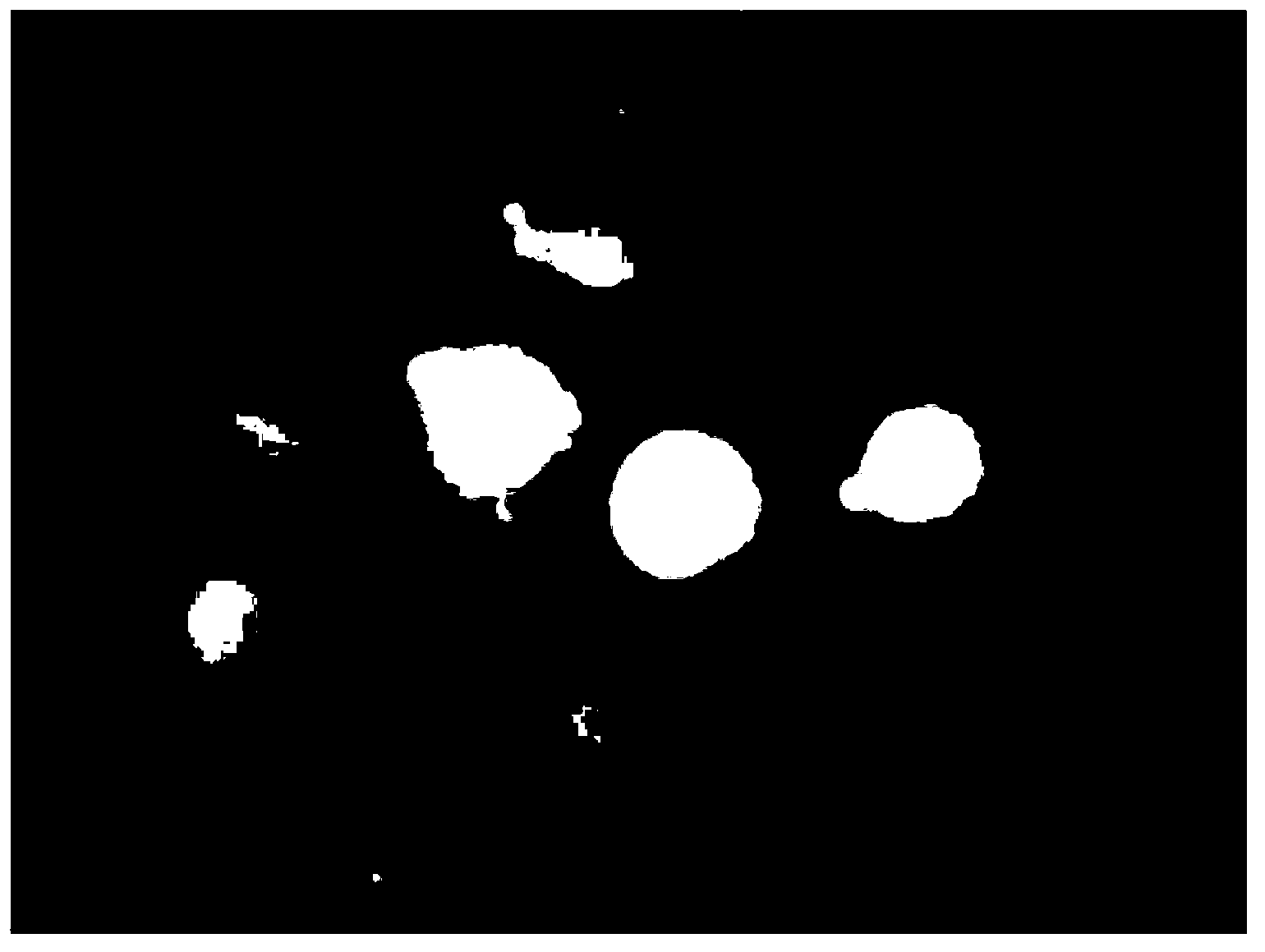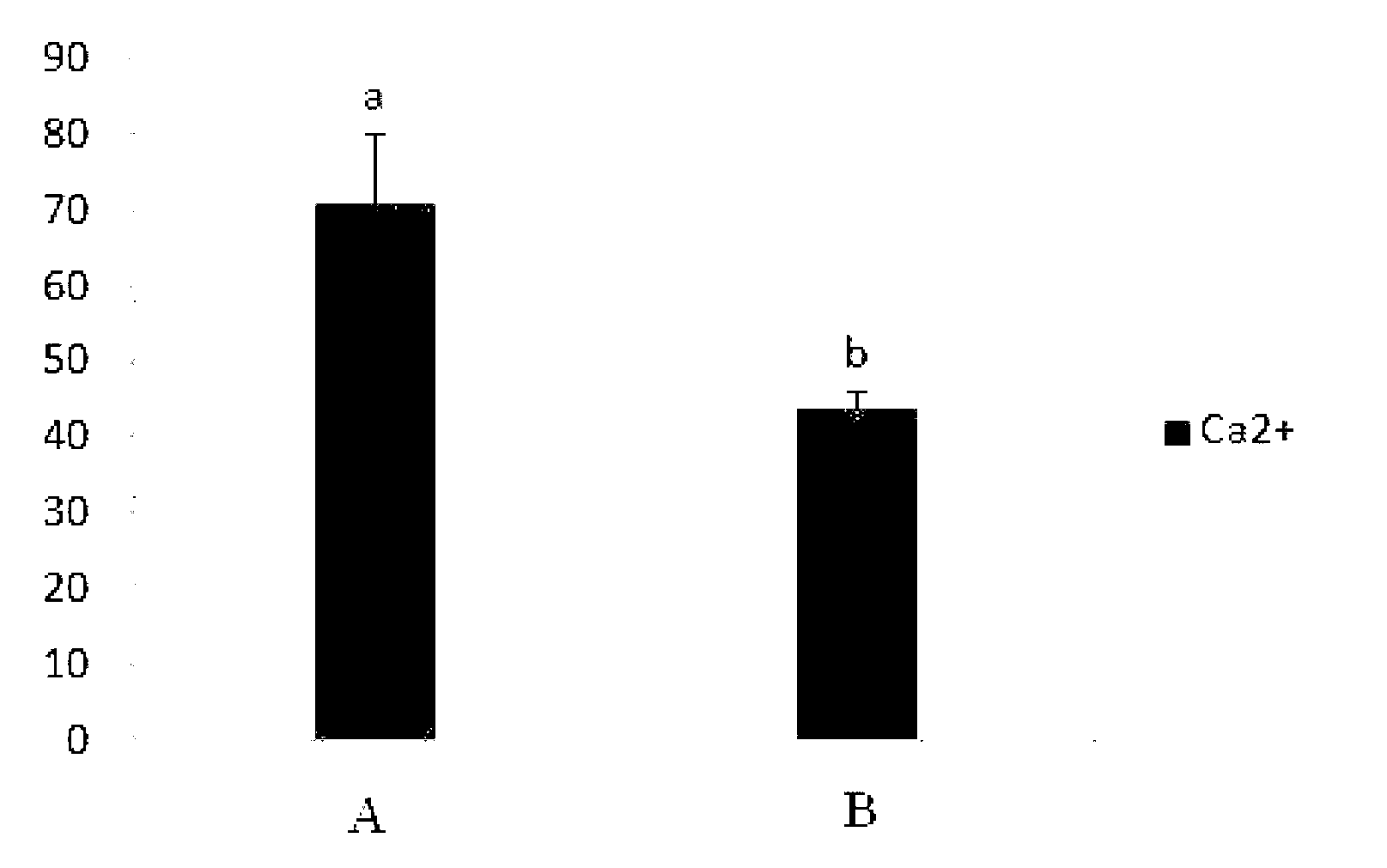Application of n-octanol to prolonging of in-vitro ageing of ovum of mammal
A mammalian, n-octanol technology, applied in the field of mammalian embryo engineering, can solve problems such as accelerating mouse egg aging, achieve the effect of delaying or reversing egg aging, high innovation, and ensuring in vitro development ability
- Summary
- Abstract
- Description
- Claims
- Application Information
AI Technical Summary
Problems solved by technology
Method used
Image
Examples
Embodiment 1
[0048] Example 1: Collection and in vitro maturation of bovine oocytes
[0049] Bovine ovaries were collected from the slaughterhouse, placed in a thermos flask containing saline at 25-30°C, and returned to the laboratory within 3 hours. After arriving at the laboratory, wash the ovaries with 37°C preheated sterile normal saline for 3 times, then put the washed ovaries in the preheated sterile normal saline in a 37°C water bath, and use a 10mL syringe with a 18-gauge needle Aspirate the COCs in the 2-8mm follicles above the ovary, wash cumulus cells with a complete layer of cumulus cells or part of dense cumulus cells in egg washing solution for 2 times, then wash 3 times in maturation solution, and transfer the washed COCs into Put 15-20 pieces of COCs into 100μL oocyte in vitro maturation culture micro-droplets, and finally put them in 38.5℃, 5% CO 2 and cultured in a carbon dioxide incubator with saturated humidity for 24 h.
Embodiment 2
[0050] Example 2: In vitro aging of bovine ova
[0051] After bovine COCs were cultured in vitro for 24h (0h as aging), COCs were de-cumulus cells with 0.1% hyaluronidase or COCs were transferred to TCM199+10%FBS and continued to culture under the above conditions (6-24h , put 20-25 eggs in each droplet). At different time points of aging, the naked eggs and COCs groups were randomly selected for various tests.
Embodiment 3
[0052] Example 3: Parthenogenetic Activation of Bovine Oocytes
[0053] Put the oocytes matured for 24 hours into a tube containing 0.1% hyaluronidase, repeatedly pipet with a pipette gun for 1 minute to remove cumulus cells, then wash three times with H199 solution containing 10% FBS, and remove the oocytes with complete morphology and uniform cytoplasm After the oocytes were activated in 5 μmol / L ionomycin for 5 minutes, they were transferred into 2.0 mmol / L 6-DMAP (6-dimethylaminopurine) and cultured for 4 hours. Then wash three times with CR1aa+3mg / mLBSA, transfer to CR1aa+3mg / mLBSA micro-drops pre-equilibrated for 4 hours, 15-20 pieces per drop, and place at 38.5°C, 5% CO 2 and cultured in a carbon dioxide incubator with saturated humidity, and the cleavage rate was checked 48 hours after parthenogenetic activation, and the cleaved embryos were picked out from CR1aa+3mg / mL BSA microdroplets and washed 3 times with CR1aa+10%FBS, and then Embryos were transferred to CR1aa+...
PUM
 Login to View More
Login to View More Abstract
Description
Claims
Application Information
 Login to View More
Login to View More - R&D
- Intellectual Property
- Life Sciences
- Materials
- Tech Scout
- Unparalleled Data Quality
- Higher Quality Content
- 60% Fewer Hallucinations
Browse by: Latest US Patents, China's latest patents, Technical Efficacy Thesaurus, Application Domain, Technology Topic, Popular Technical Reports.
© 2025 PatSnap. All rights reserved.Legal|Privacy policy|Modern Slavery Act Transparency Statement|Sitemap|About US| Contact US: help@patsnap.com



